

Max Davies
2026 Toyota HiAce review
2 Hours Ago
With a new generation on the way, the current Subaru XV makes a solid case for itself as a reliable, no-nonsense small SUV buy.
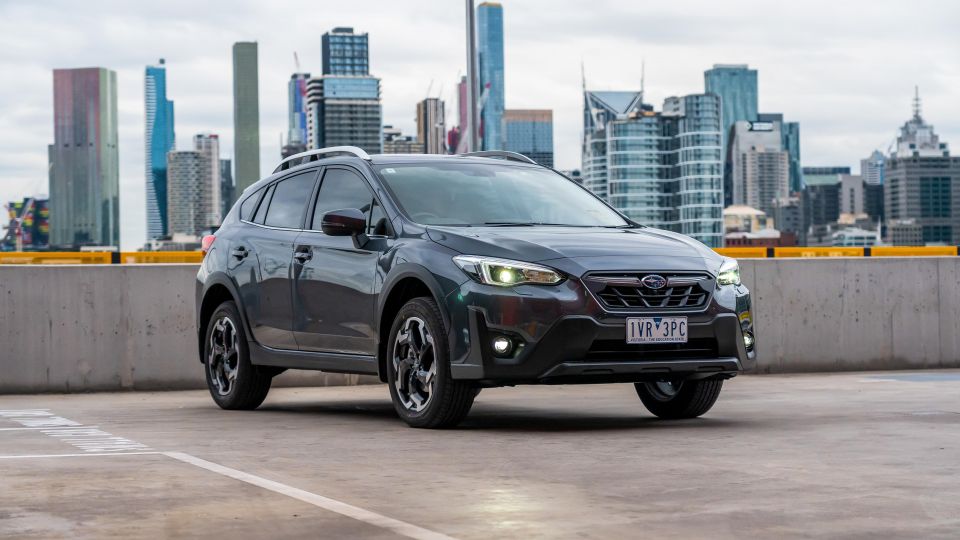
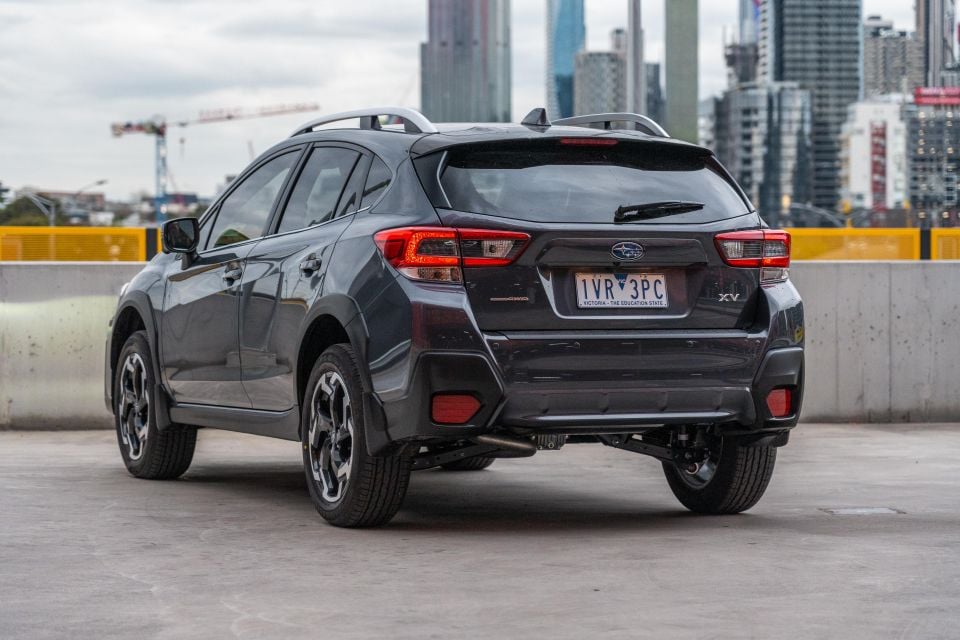

Quickly see how this car stacks up against its competition. Select any benchmark to see more details.
Where expert car reviews meet expert car buying – CarExpert gives you trusted advice, personalised service and real savings on your next new car.
The Subaru XV has been a long-running success for the Japanese brand, but since its inception a decade ago, the market has gotten a bit… crowded to say the least.
Also known in some overseas markets as the Subaru Crosstrek, the XV’s recipe is fairly simple: take the well-known Impreza hatchback, chuck on some cladding and jack up the ride, and there you have it. Think of it as what the Outback is to the Liberty.
Currently in its second generation, and nearly at the end of its life given a new model has just been revealed for Japan, the XV continues to be one of the brand’s top sellers in Australia even if it’s not the segment sales leader it once was.

In September 2022 the company registered 952 units, with the year to date (YTD) tally sitting at 6640 units to September 30. With some 7.5 per cent market share, that ain’t half bad given it has more than 20 competitors.
Further, select variants in the MY22 range are now sold out, according to Subaru, though the top-spec Subaru XV 2.0i-S we have here on test is still available at the time of writing.
The new one has already been revealed, due in early 2023 and set to swap out the XV name for the global Crosstrek badge. Is the outgoing car still worth a look?
The XV 2.0i-S is the penultimate variant in the line-up, priced from $38,490 before on-road costs – although a new model is coming soon, meaning stock of the current car might not be around for much longer. Using the brand’s website and a Melbourne postcode, that works out to a drive-away price starting at just over $43,000.
Only the Hybrid S is more expensive, offering the same spec but with an electrified powertrain from $42,090 plus on-roads. It’s the dearest petrol variant currently on offer, and is $2700 more expensive than the 2.0i Premium that sits below it.
The Subaru XV isn’t short on competitors, given the mainstream small SUV segment features more than 20 entrants – with the Toyota Corolla Cross a new addition in the last month or so.
At this price point the XV competes with mid- to high-spec versions of rival vehicles and actually comes off as decent value – more on the inclusions later.
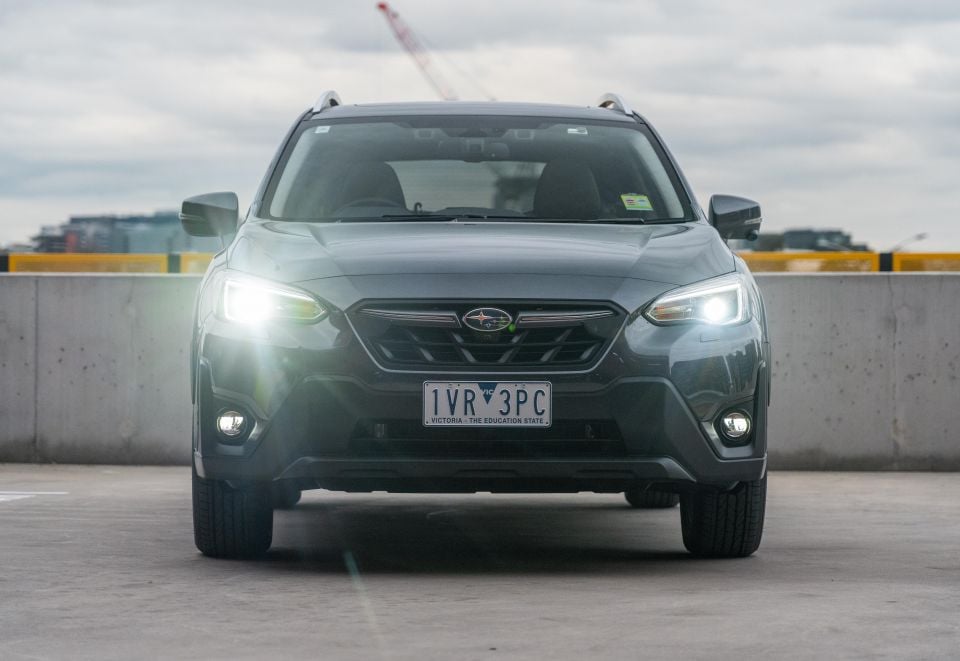
2022 Subaru XV pricing
Key rivals include:
Prices exclude on-road costs unless specified
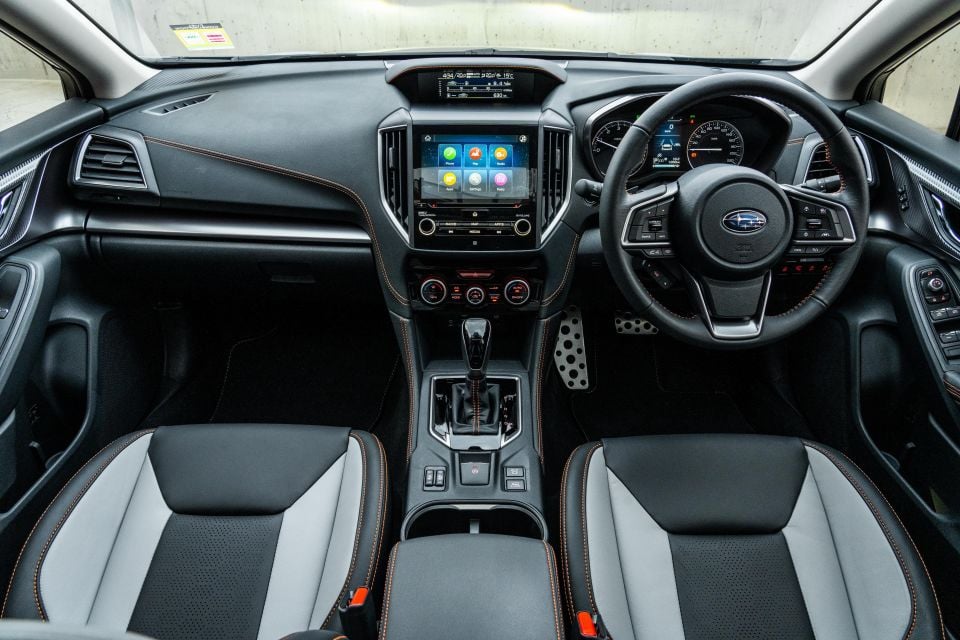
Buy your new car without the stress. It's fast, simple and completely free.

Great service from Travis and team, second time I have used this business would not hesitate to recommend them to anyone
Craig C.
Purchased a Ford Ranger in Sunshine Coast, QLD
CarExpert helped Craig save thousands on his Ford Ranger, now let us save you on your next new car.
Find a dealDespite being one of the more aged vehicles in the segment, the XV presents one of the better designed and finished interiors in the compact SUV classes.
Particularly in 2.0i-S trim, there’s padded, stitched leather bits lining the dashboard and lower reaches of the centre stack; contrasting leather surfaces on the seats; chunky, solid-feeling switchgear, as well as clear gauges and displays.
Comfort up front is good courtesy of the eight-way electrically adjustable driver’s seat with two-position memory, with both front pews also heated. Ergonomically it’s pretty sound, with buttons logically laid out and within driver’s reach.

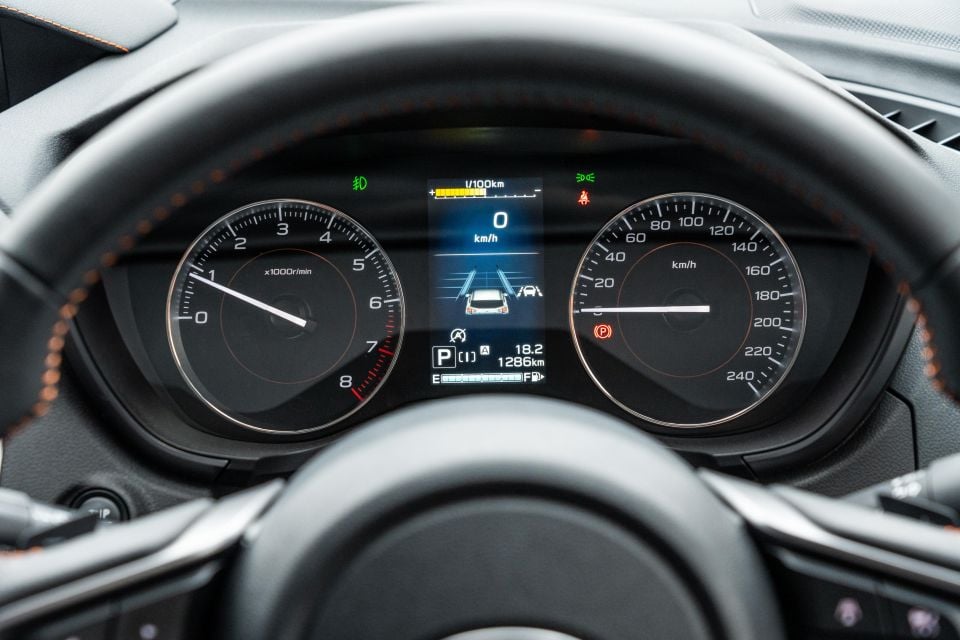
While the next-generation Crosstrek will introduce a new interior more aligned with the Outback, complete with a huge vertical touchscreen and wireless smartphone mirroring, the current model’s layout still does the job.
The analogue gauges with driver’s supervision display are clean and easy to read, with the central display showing things like trip computer, assistance functions, as well as a digital speed readout. Annoyingly, getting a phone call or using the adaptive cruise control takes up half the screen without a way of getting out of it.
Closer to the driver, the thin-rimmed steering wheel has a nice design but the leather wrapping feels more hard-wearing than supple – whether that’s good or bad will be down to personal preference.
Some bits do feel a bit dated, like the toggle switches for the heated front seats, as well as the cheap-feeling flickers for the cruise control and volume. The contrast orange stitching is a nice touch in my opinion, however.
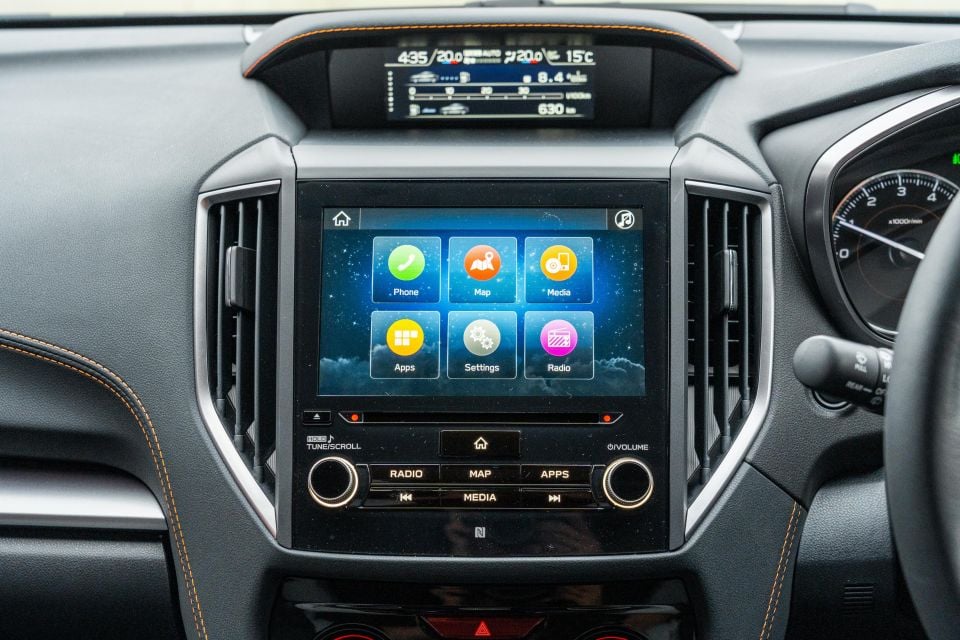
Sitting in the centre of the dash is an 8.0-inch touchscreen with satellite navigation, wired Apple CarPlay and Android Auto, as well as AM/FM/DAB radio tuners.
While it may not be the quickest or most attractive infotainment unit on the market, it does the job and is well featured. There’s even a CD player, for people who still use those…
All models also get a six-speaker audio system, which didn’t sound particularly groundbreaking against branded premium systems in competitors, and there’s also two USB-A outlets up front.
Above that is an additional 6.3-inch multifunction display that shows everything from air-conditioning and song information to menus about the EyeSight assistance systems and X-Mode off-road settings. It’s an interesting setup, but once you find the display combination that works for you it’s handy to have dedicated screens for different things.
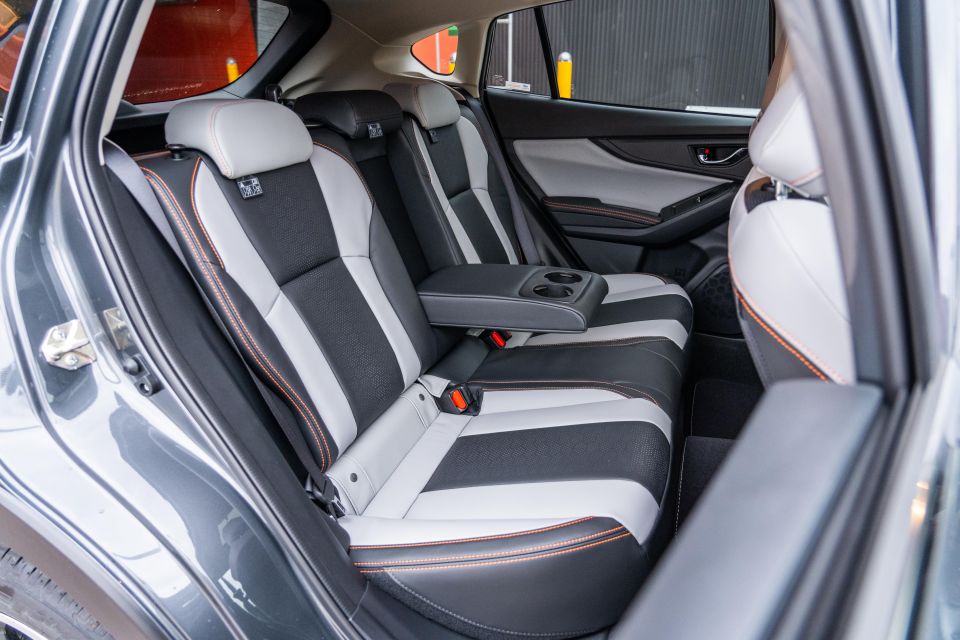
Being based on the Impreza, the XV’s second row isn’t a standout for the class.
Headroom is fine, but knee and legroom can be a little tight if you’re a taller passenger sitting behind a taller driver. At 6’1, I’m a little above average height, and I was a bit snug behind my preferred driving position.
Kids and smaller adults will be happy back here, though, and there are amenities like a fold-down centre armrest with cupholders, bottle holders in the doors, as well as the requisite child seat anchor points (2 x ISOFIX, 3 x top-tether), though there’s no directional air vents or USB power outlets. Subaru does list floor-mounted heater vents, however.
The rear seats can also split 60:40 for added practicality when loading long items if you still have rear passengers.
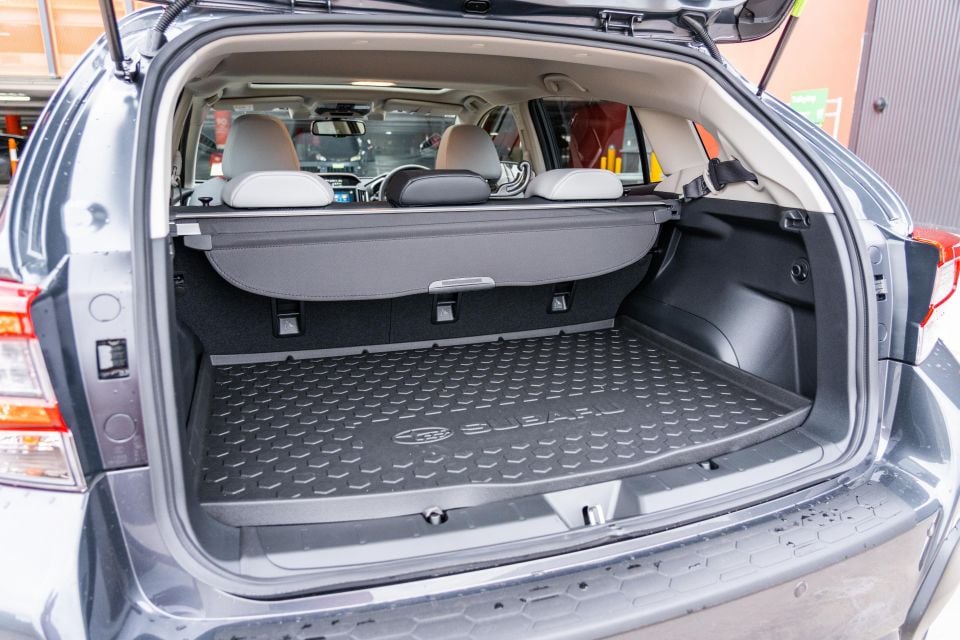
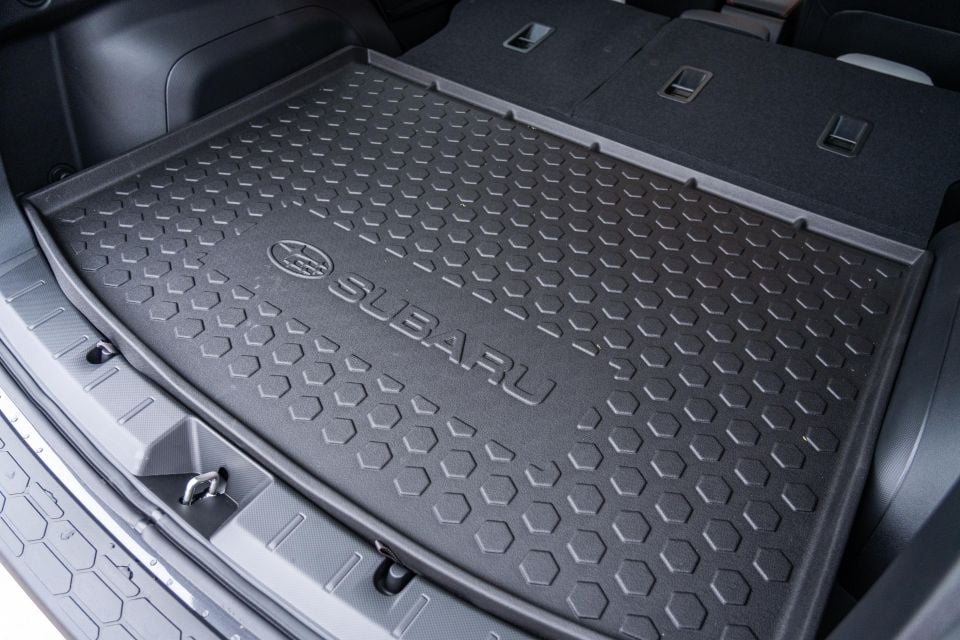

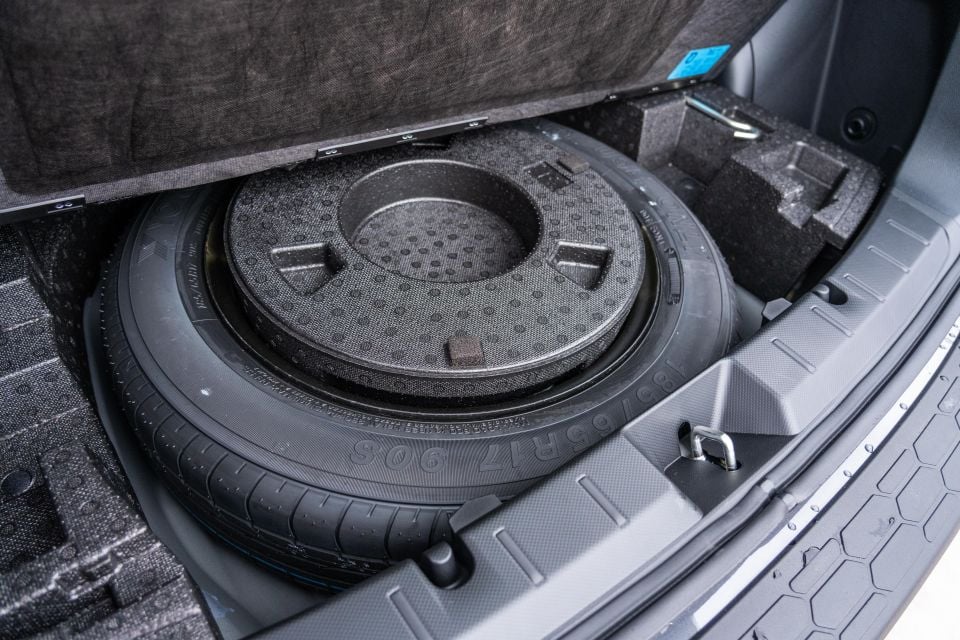
Speaking of practicality, the petrol XV offers a 310-litre boot, which is smaller than most rival models. Hybrid versions get a more accommodating 345L as they ditch the space-saver spare wheel for a tyre repair kit.
While not quite capacious, the luggage area is nice, square and flat, and when you fold the seats down it becomes a pretty flat and usable area – though Subaru doesn’t quote a boot volume with the seats down.
As noted earlier, there’s a space-saver spare wheel under the boot floor.

Petrol versions of the Subaru XV are powered by a 2.0-litre horizontally-opposed four-cylinder ‘Boxer’ petrol engine, tuned to deliver 115kW (6000rpm) and 196Nm (4000rpm).
Drive is sent to the brand’s signature symmetrical all-wheel drive system via a CVT automatic transmission with programmed ‘steps’ and a manual mode.
Subaru claims the 2.0i-designated XV models use 7.0L/100km on the combined cycle, with CO2 emissions rated at 159g/km. Idle stop/start technology features as standard.
By comparison, the 2.0-litre e-Boxer Hybrid gets a 110kW version of the same engine teamed with a 12.3kW/66Nm electric motor and lithium-ion battery, which brings combined efficiency down to 6.5L/100km.
While that seems like a negligible difference, the XV Hybrid’s urban fuel use figure of 7.5L/100km is a 1.3L improvement on the petrol model.
Petrol XV models get a pretty large 63-litre fuel tank (v 48L for the Hybrid), with all models compatible with 91 RON regular unleaded. The XV is rated to tow up to 1400kg with trailer brakes, with a max towball download of 140kg.
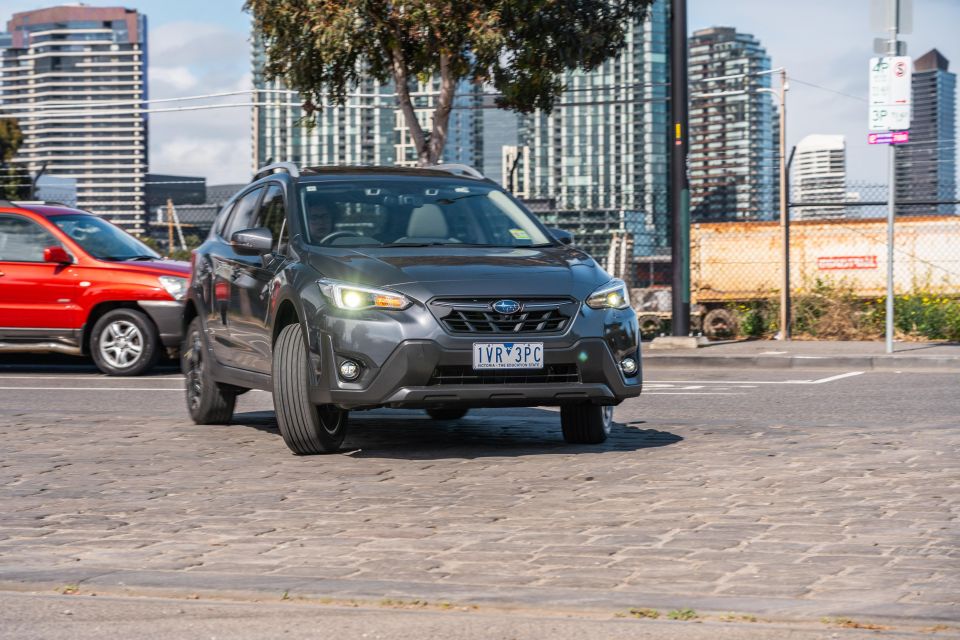
The XV fires to life with that signature Boxer rumble that takes me back to my Dad’s 2003 Liberty.
It can be a little coarse and loud on a cold start, but it settles eventually and for the target market it covers most bases just fine.
Urban types will like the responsive performance at city speeds, helped by the eager CVT which keeps you in the power band and reacts quickly to throttle inputs. Downside is that it can be a little droney and the 2.0-litre Boxer’s engine note isn’t the most attractive of soundtracks.
While styled like an adventure seeker, the XV has been designed with city life in mind. It’s pretty compact relative to some competitors, and feels less SUV-like and more jacked-up hatch – which it essentially is, anyway.
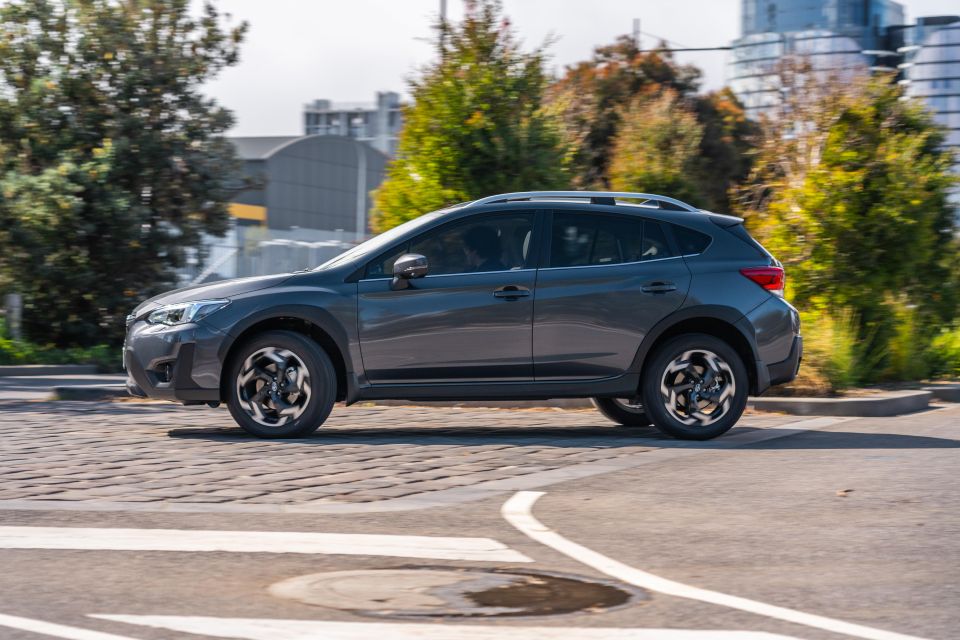
The upside to this is that it’s very easy to see out of, while the driver controls are accurate and responsive without an unnecessary athletic focus.
It’s an easy thing to thread through tight city streets and heavy traffic, while also proving stable and confident on the open road. The raised ride height (220mm) and fairly chubby 225/55 Bridgestone tyres make for a pliant ride too, while maintaining a sure-footed feel when things get twisty.
You can see why the XV has been so enduringly popular since it launched, because it’s a bit of a ‘right size’ or ‘Goldilocks’ crossover-SUV that is super car-like to drive while bringing the perceived comfort and driving position gains that comes with SUV life.
Most of my time with the XV was spent commuting to and from the CarExpert Melbourne office in the Docklands from my home in the eastern suburbs. As a no-nonsense daily driver, it’s hard to fault.
With that said, the Subaru XV isn’t perfect and there are a few niggling points about the drive experience that came to the surface.
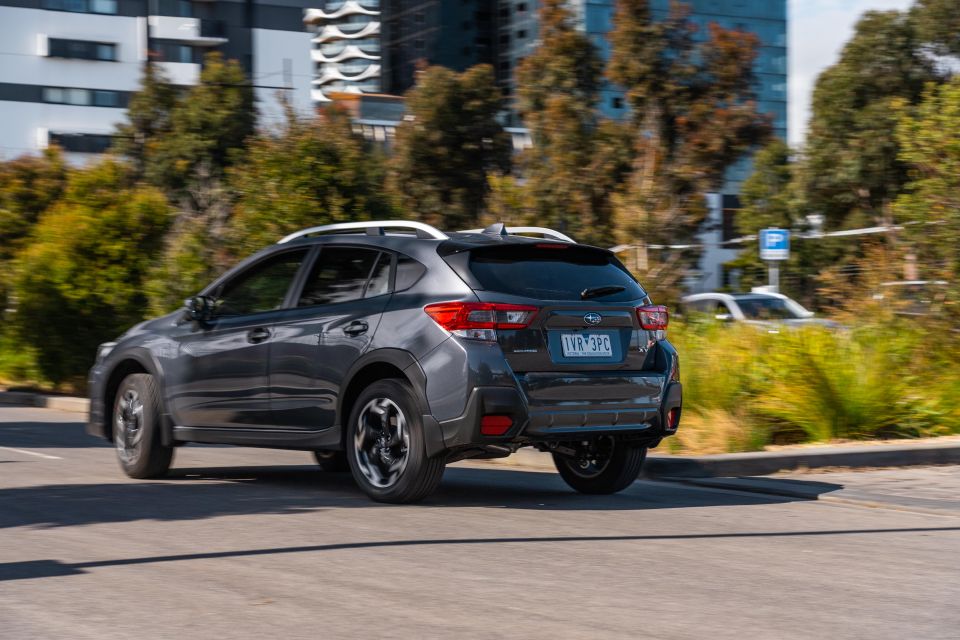
Firstly, said rumbly engine is fine in sedate driving when you don’t exceed 60km/h, but try to hoof it and you’re met with a lot of noise and flaring of the transmission. Subaru has programmed ‘steps’ into the CVT’s mapping to simulate a conventional automatic under harder throttle, but it’s not something you’ll enjoy hearing often.
The 2.0-litre engine’s uninspiring outputs also mean it starts to run out of puff at the top end, so if you regularly frequent country highways overtaking requires a bit of forward thinking.
It’s also not the most refined thing to cruise in particular as the speed climbs. Rivals like the Mazda CX-30 offer luxury levels of cabin insulation, while the XV has an acceptable, if noticeable level of wind and road noise in the cabin. It just doesn’t feel quite as bank vault-solid as some competitors.
At least the idle stop/start system is one of the quicker of its type, and there’s a cool little graphic in the driver’s supervision display and the high-set supplementary display that show how long the system has been engaged over time and how much fuel has been saved – I saved a few litres over a couple hours’ worth of accrued off time.
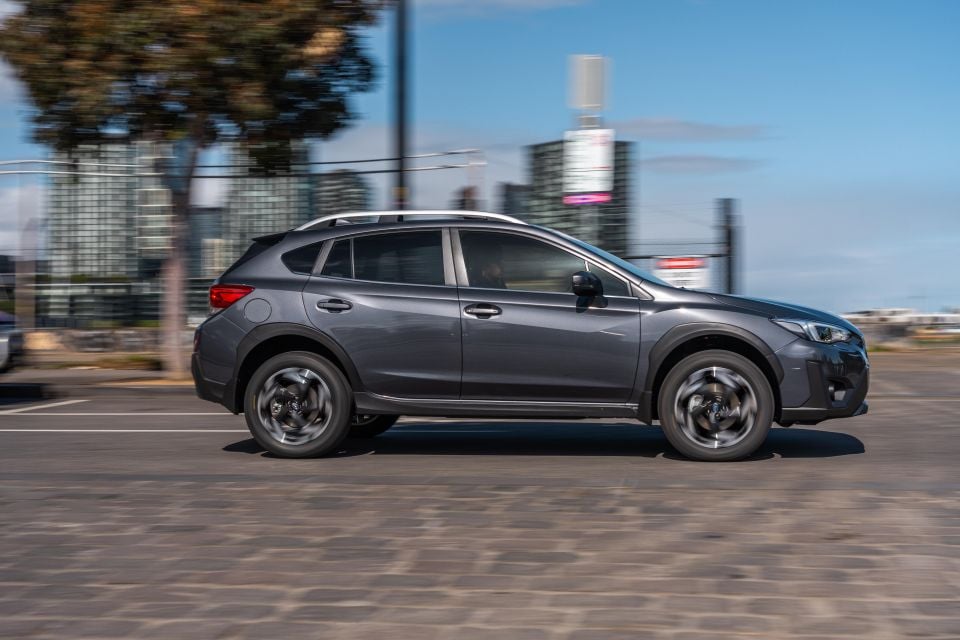
Subaru’s EyeSight suite of driver assistance systems make for a well-rounded list of features on a spec sheet, but in real-world use some of them are quite, erm… annoying.
The main annoyance is the adaptive cruise control, which constantly beeps at you. Why? No, it’s not because you’re straying from your lane or not holding the steering wheel, it’s because a car has either merged ahead of you or moved out of your way.
Considering the lack of etiquette and constant lane-changing employed by Australian motorists, you can imagine how often I heard the high-pitched beep during just a week of driving.
Otherwise, it’s pretty good; the adaptive cruise control is pretty accurate, though unlike the larger Forester there’s no active lane centring function. Standard blind-spot monitoring and rear cross-traffic alert help to supplement the above average outward vision with technological assistance.
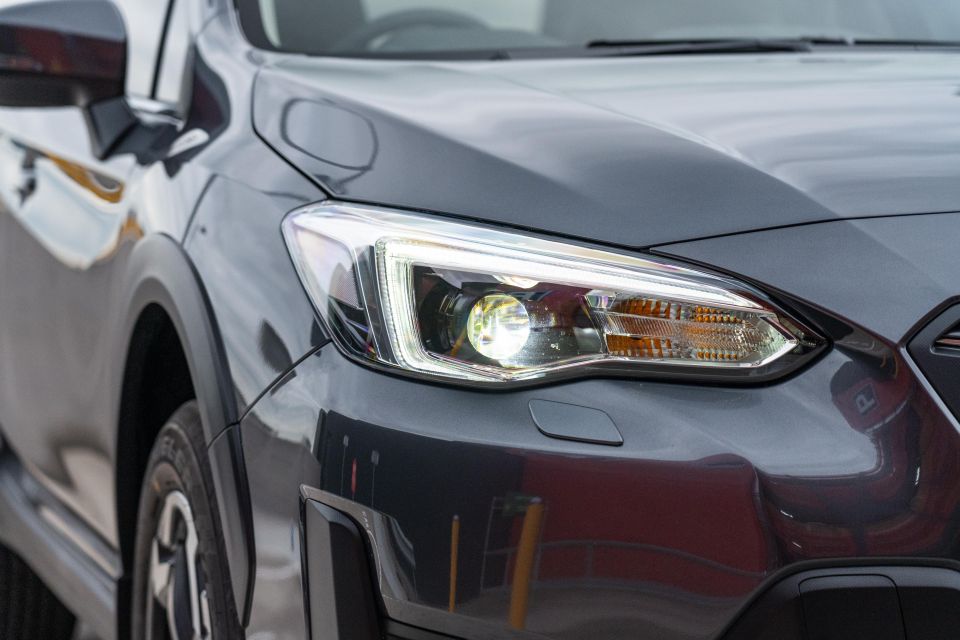

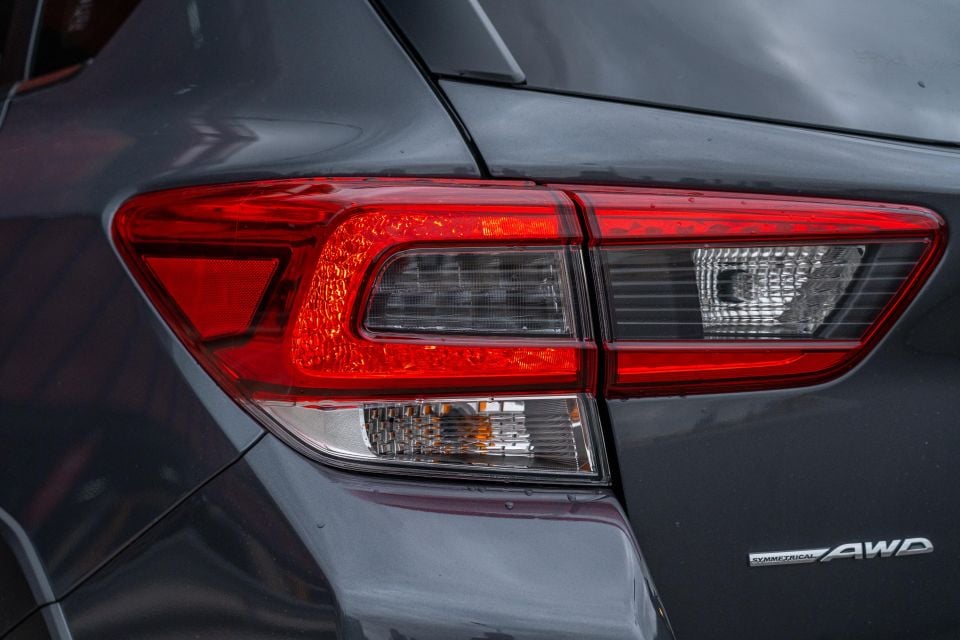
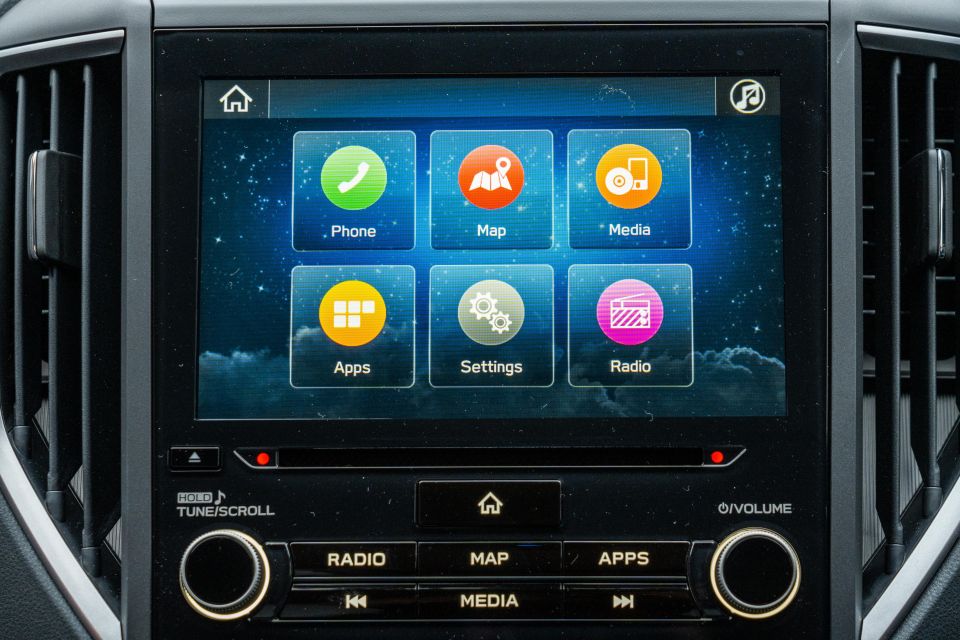
Where expert car reviews meet expert car buying – CarExpert gives you trusted advice, personalised service and real savings on your next new car.
XV 2.0i-S highlights:
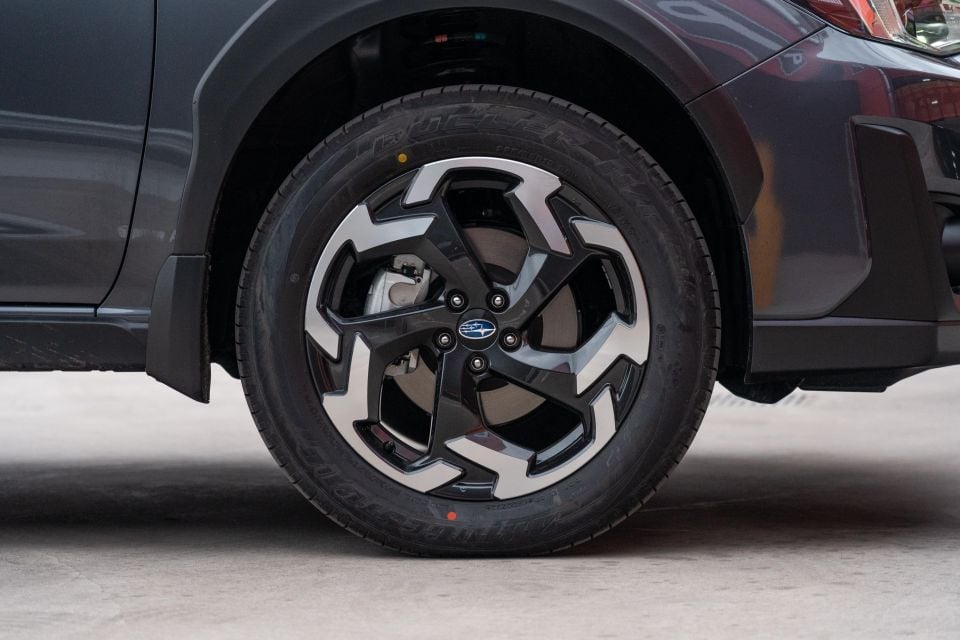
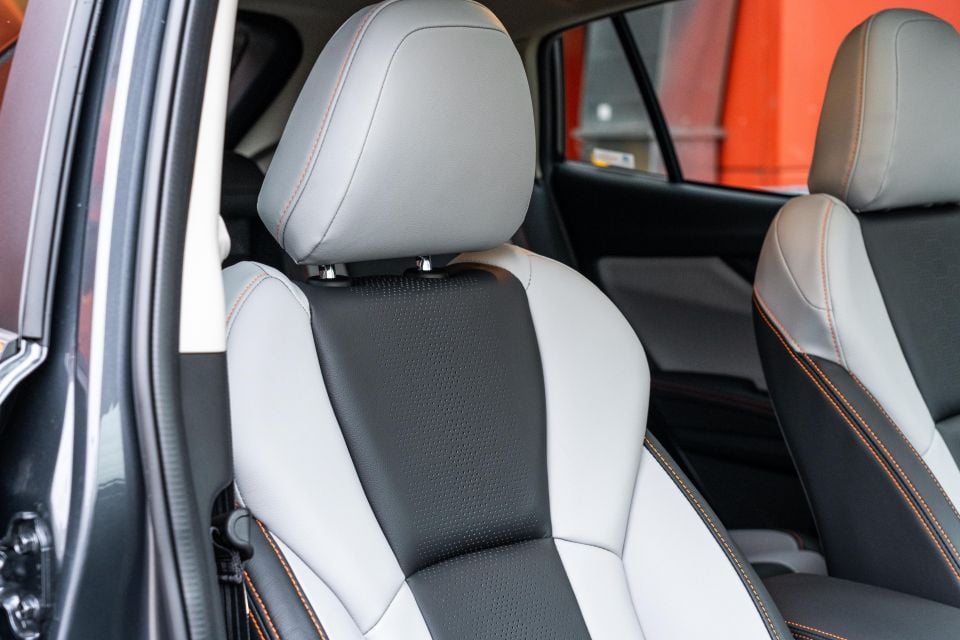
Features carried over from lower grades include:
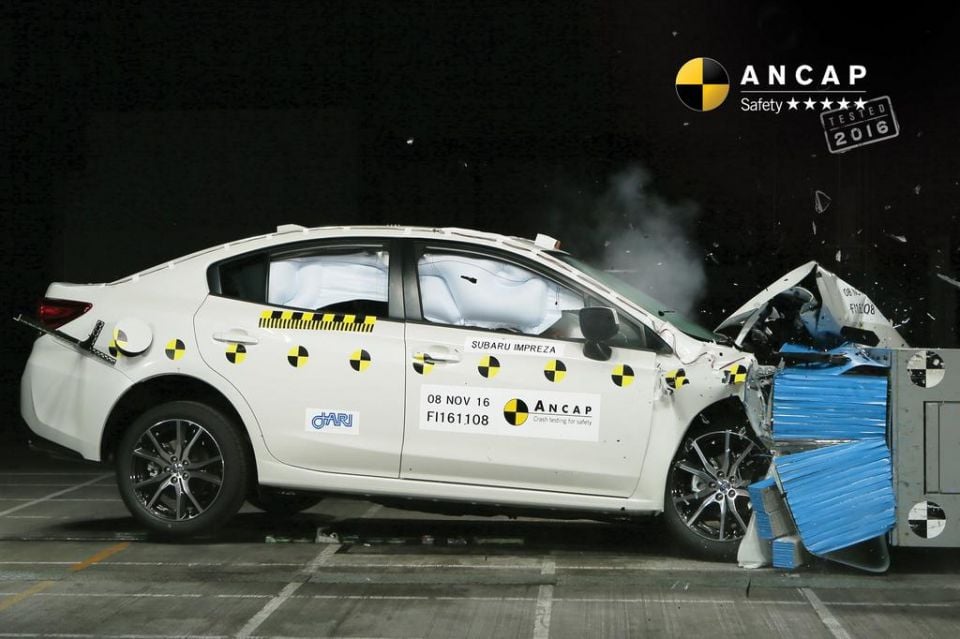
The Subaru XV wears a five-star ANCAP safety rating with 2017 datestamp, based on tests performed on the related Impreza in 2016.
It’s worth noting the Impreza and XV were assessed against older ANCAP criteria, including an overall score of 35.80 out of 37 points. The XV managed 14.80 out of 16 for the frontal offset test, as well as a perfect 16.00 out of 16 for the side impact test. It received a Good rating for whiplash protection, and Good for pedestrian protection.
While the local crash rating doesn’t include the newer ratings structure shared with Euro NCAP, the XV scored 94 per cent for adult occupant protection, 89 per cent for child occupant protection, 84 per cent for pedestrian detection and 68 per cent for safety assist in Euro NCAP’s 2017-stamped five-star safety rating.
Standard safety equipment includes:
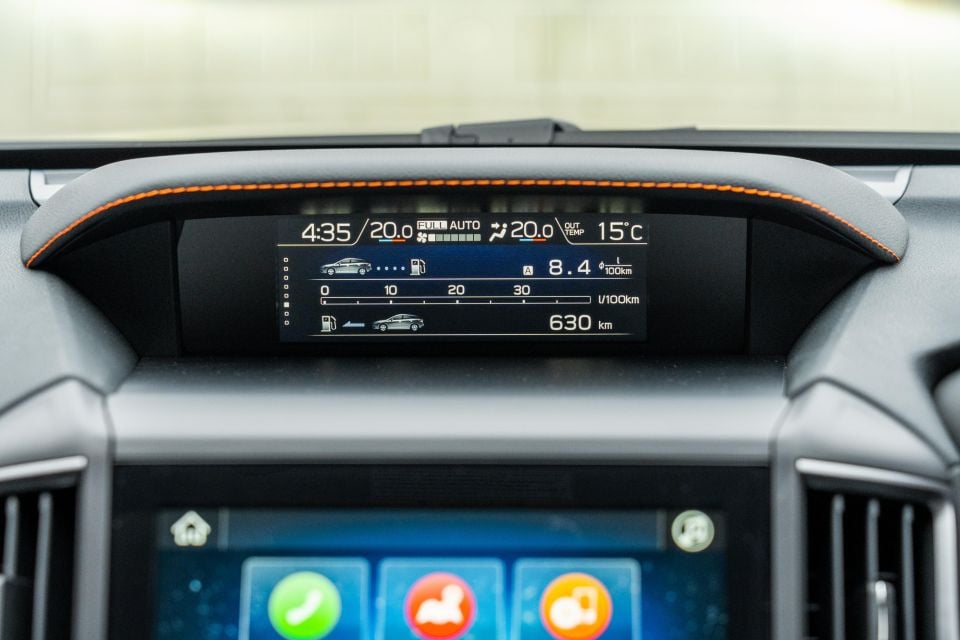
Like the wider Subaru line-up, the XV is covered by a five-year, unlimited-kilometre warranty, with 12 months of complementary roadside assistance through Motoring Clubs of Australia membership.
Scheduled maintenance is required every 12 months or 12,500 kilometres – whichever comes first.
While Subarus of old had lofty service costs, the company now offers three- and five-year plans for added transparency and peace of mind. For the XV, the former is $1311.04 and the latter $2477.60.
As for real-world fuel consumption, we saw an indicated average of 8.5L/100km during our time with the XV, which covered a week’s worth of commuting to and from work in heavy traffic as well as some weekend shopping.
That’s a bit up on Subaru’s 7.0L/100km combined claim, though respectable given the amount of stop-start city driving.
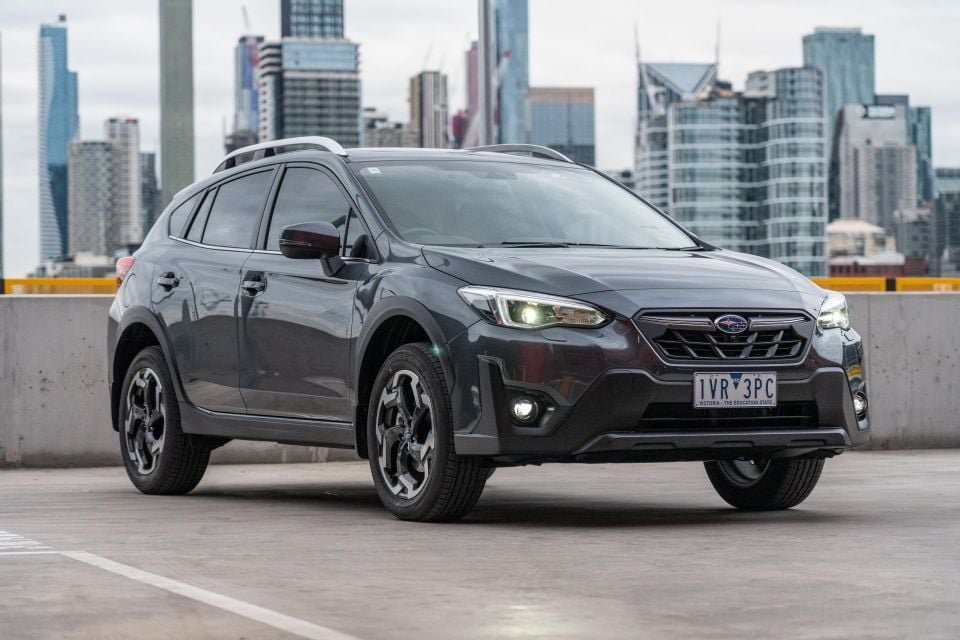
So, is the outgoing Subaru XV worth considering with the imminent arrival of the new-generation Crosstrek? Maybe.
If the developments of the new model aren’t really worth the wait for you – namely that swish new infotainment system and potential powertrain developments, as well as the new design – then the current car stacks up as probably 80-90 per cent of what the new car will offer based on what we know.
With that said the new Toyota Corolla Cross shapes up as a worthy alternative using the hatch-nameplate-on-stilts recipe, with a greater range of hybrid options and more of the high-end tech available from a lower price point.
Like most of Subaru’s current line-up, the XV is a no-nonsense all-rounder with proven competency in about every category. It’s also a smart looker with one of the nicer interiors in its class, and in 2.0i-S spec loads about all the features and tech you could want for the money.
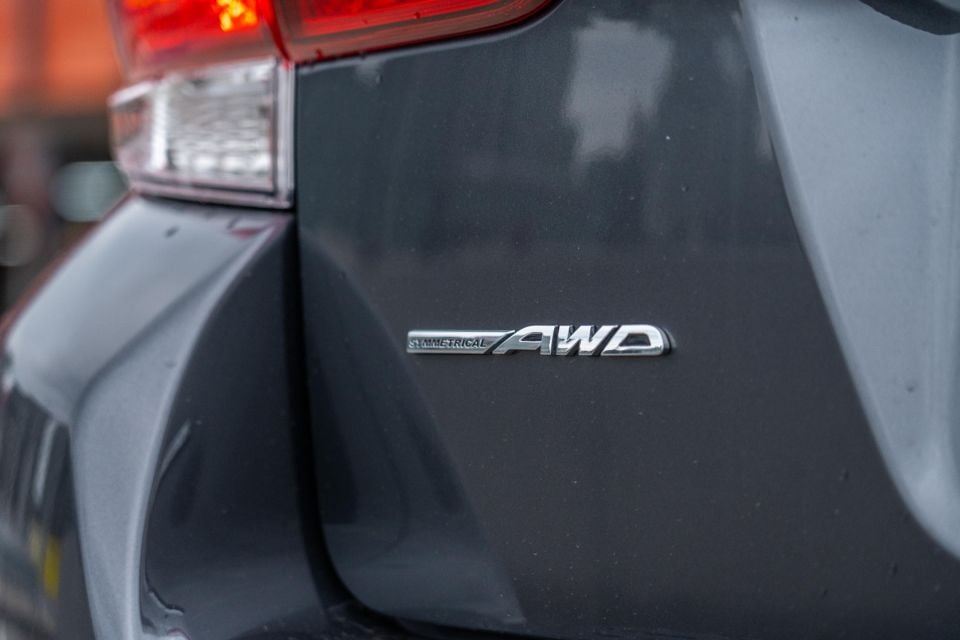
Click the images for the full gallery
MORE: Everything Subaru XV
Where expert car reviews meet expert car buying – CarExpert gives you trusted advice, personalised service and real savings on your next new car.
James Wong is an automotive journalist and former PR consultant, recognised among Australia’s most prolific motoring writers.


Max Davies
2 Hours Ago


William Stopford
18 Hours Ago


Ben Zachariah
19 Hours Ago


Derek Fung
19 Hours Ago


Matt Campbell
1 Day Ago


William Stopford
2 Days Ago